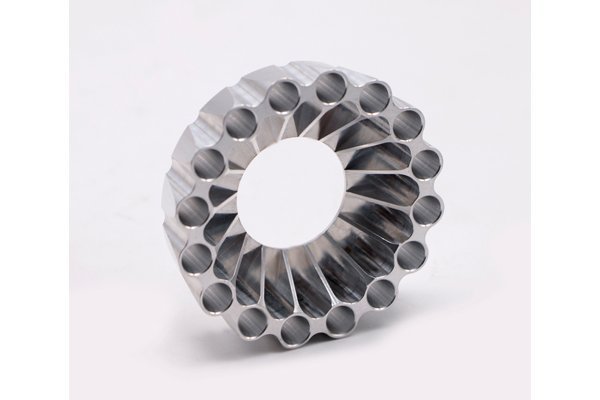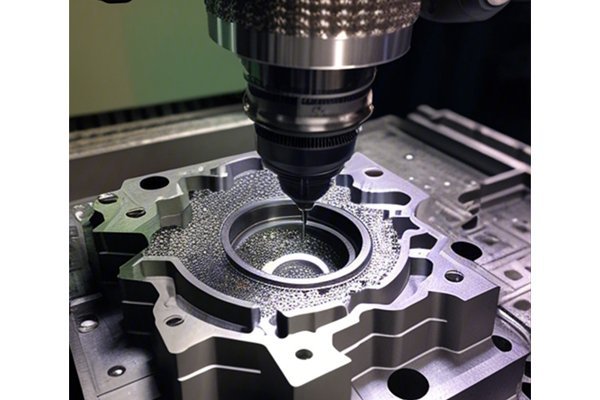Are you aware that approximately 65% of all manufactured products require the precision of internal holes? Whether in automotive parts, aerospace components, or intricate medical devices, complex internal hole machining is a critical aspect of modern manufacturing. With the exponential growth in technological advancements, CNC (Computer Numerical Control) custom machining has revolutionized the way we tackle such challenging tasks. So, how can CNC custom machining handle complex internal hole machining effectively? Let’s delve deeper into the various methods, technologies, and strategies that make this possible.
Understanding CNC Custom Machining
CNC machining is the process whereby pre-programmed computer software controls the movement of manufacturing tools and machinery. This technology allows for unparalleled precision and repeatability, enabling the creation of intricate designs that are often impossible to achieve with traditional machining methods. Complex internal hole machining, which requires deep and precise hole creation, can be a daunting task without the right framework.
The Importance of Tools in CNC Machining
When it comes to complex internal hole machining, the tools used play a critical role. Different types of cutting tools such as drills, end mills, and specialized custom tools are essential. Precision cutting tools are engineered for specific tasks, including those with unique geometries or materials.
The geometry of the cutting tool significantly affects the machining process. Tools designed with features that reduce friction and improve chip removal can dramatically increase efficiency and reduce wear. Additionally, advanced coatings for tools, such as titanium nitride (TiN) or diamond-like carbon (DLC), further enhance performance and tool life.
Choosing the Right CNC Machine
The selection of a CNC machine is paramount to successfully execute complex internal hole machining. Machines with high-speed spindles and multi-axis capabilities (3-axis, 4-axis, or 5-axis) are ideal for intricate designs. Multi-axis machines facilitate simultaneous movement along multiple planes, allowing more flexibility in tool access.
A stable CNC machine helps maintain accuracy during machining. Any vibration or movement can lead to inconsistencies. Machines with robust construction ensure minimal deflection, leading to tighter tolerances and better surface finishes.
Advanced Techniques for Internal Hole Machining
Peck drilling is an effective way to create deeper holes. Instead of a single continuous motion, the drill is advanced in small increments (or “pecks”), allowing for better chip removal and reduced heat generation. This method is particularly beneficial when working with hard materials.
Boring is often used for enlarging existing holes to precise diameters, while reaming fine-tunes the hole’s surface finish and size for optimal fit. Combining these techniques within a CNC machining process allows manufacturers to achieve tighter tolerances and higher quality surfaces.
For extremely complex geometries that cannot be easily reached or machined by traditional methods, Wire EDM is a game changer. This technique employs a thin wire to cut through conductive materials, allowing for very intricate internal features. It is often utilized when working with hardened materials or elaborate shapes that require precision precision.
Programming for Precision
Computer-Aided Design (CAD) and Computer-Aided Manufacturing (CAM) are vital in CNC machining. CAD software helps design the components, while CAM software generates the precise tool paths needed for machining. This integration streamlines the entire process, ensuring that the desired internal geometries are accurately replicated.

Before physical machining begins, employing simulation tools can prevent costly errors. Advanced software can analyze tool paths for potential collisions and inefficiencies, allowing for modifications and optimizations prior to actual machining.
Quality Control Methods
Quality control is crucial in ensuring that internal hole machining meets specifications. Real-time monitoring during the machining process, using techniques such as laser scanning or precision measuring tools, helps detect deviations promptly. At the end of the process, multiple inspection methods (coordinate measuring machines, optical comparators, etc.) provide assurance that all aspects of the machining meet stringent standards.
Materials and their Influence
Different materials pose unique challenges for complex internal hole machining. The choice of materials—including metals like titanium, aluminum, or composites—affects tool selection, machining parameters, and overall process complexity. For example:
Often favored for its lightweight and malleability, aluminum allows for faster machining speeds. However, appropriate feeds and speeds must be calibrated to prevent chip clogging.
A robust yet difficult-to-machine material, titanium requires specialized cutting techniques and tools to handle heat dissipation and tool wear.
Machining composites involves different strategies, particularly to avoid delamination and ensure cohesive structures through appropriate feed rates and cooling techniques.
Overcoming Challenges
Heat can be detrimental during machining, leading to tool wear and material distortion. Incorporating coolant systems, selecting appropriate cutting speeds, and utilizing heat-resistant tools can mitigate thermal effects.
Achieving tight tolerances in complex holes requires an understanding of thermal expansion, tool wear, and material deformation. Regular calibrations of CNC machines and maintaining proper operational parameters will ensure consistency.
Future of CNC Custom Machining
As technology continues to evolve, the future of CNC custom machining looks brighter. Innovations such as artificial intelligence (AI), machine learning, and additive manufacturing are set to revolutionize the industry. AI can help optimize machining parameters in real-time, while additive manufacturing may provide opportunities for hybrid approaches to complex part creation.
In conclusion, CNC custom machining stands as an invaluable solution for handling complex internal hole machining. The combination of precision tools, advanced programming techniques, quality control measures, and material considerations culminates in achieving unparalleled precision and efficiency in manufacturing. Understanding these technologies and methodologies ensures that manufacturers stay competitive in an ever-evolving industrial landscape.
This blog aims to provide valuable insights into the intricacies of CNC machining for complex internal hole applications. As industries increasingly demand precision and complexity, exploring effective strategies in CNC custom machining will not only enhance productivity but also foster innovation. Embracing these advancements is not just beneficial—it is essential for compliance with modern manufacturing standards. So why wait? Revolutionize your machining processes and ensure your operations remain at the forefront of technological advancement!
—






